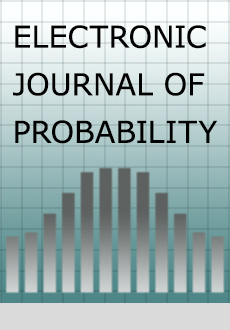Abstract
We determine that the continuous-state branching processes for which the genealogy, suitably time-changed, can be described by an autonomous Markov process are precisely those arising from $\alpha$-stable branching mechanisms. The random ancestral partition is then a time-changed $\Lambda$-coalescent, where $\Lambda$ is the Beta-distribution with parameters $2-\alpha$ and $\alpha$, and the time change is given by $Z^{1-\alpha}$, where $Z$ is the total population size. For $\alpha = 2$ (Feller's branching diffusion) and $\Lambda = \delta_0$ (Kingman's coalescent), this is in the spirit of (a non-spatial version of) Perkins' Disintegration Theorem. For $\alpha =1$ and $\Lambda$ the uniform distribution on $[0,1]$, this is the duality discovered by Bertoin & Le Gall (2000) between the norming of Neveu's continuous state branching process and the Bolthausen-Sznitman coalescent. We present two approaches: one, exploiting the `modified lookdown construction', draws heavily on Donnelly & Kurtz (1999); the other is based on direct calculations with generators.
Citation
Matthias Birkner. Jochen Blath. Marcella Capaldo. Alison Etheridge. Martin Möhle. Jason Schweinsberg. Anton Wakolbinger. "Alpha-Stable Branching and Beta-Coalescents." Electron. J. Probab. 10 303 - 325, 2005. https://doi.org/10.1214/EJP.v10-241
Information





